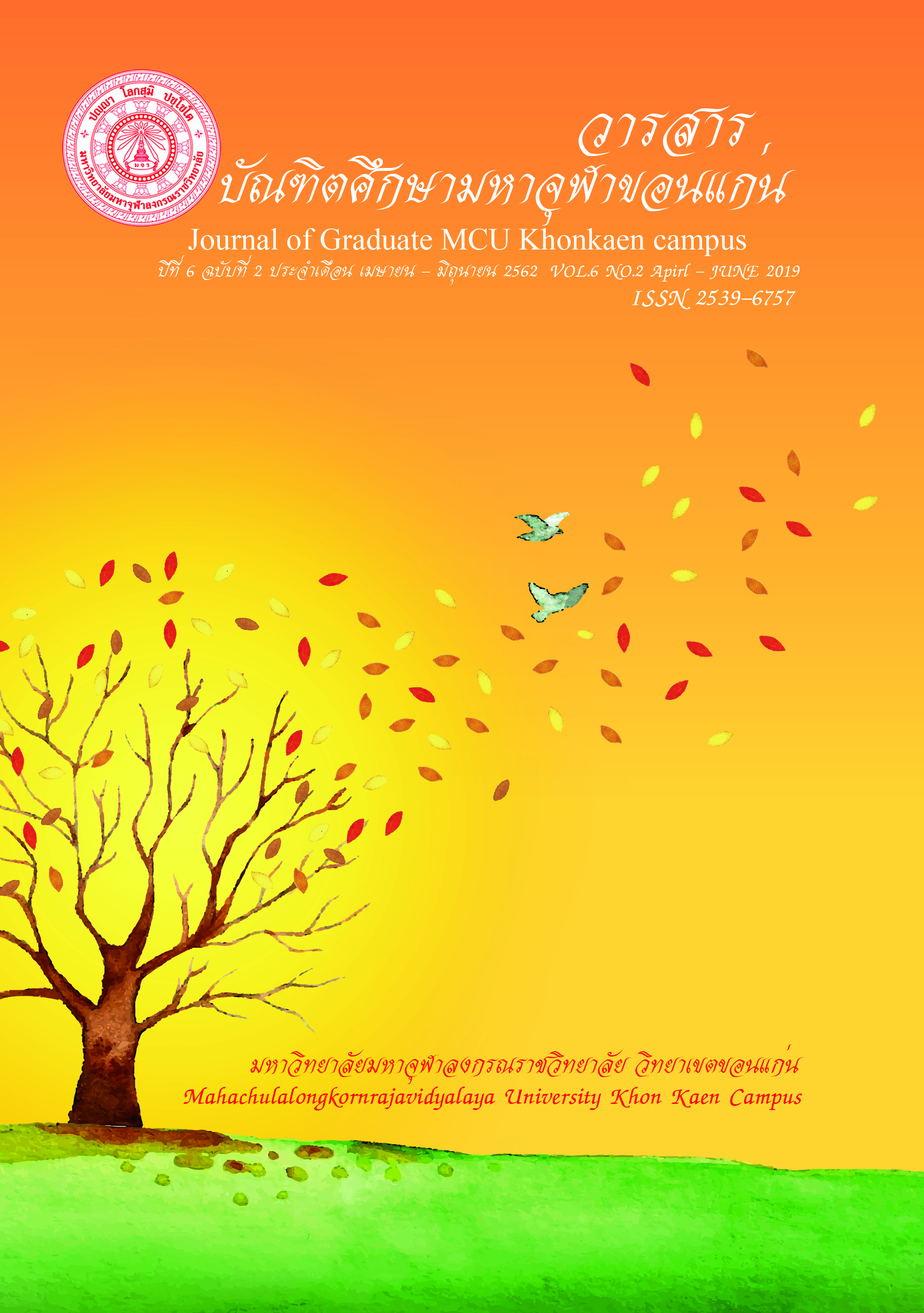Management of Community-Based Tourism in Northeastern Thailand
Main Article Content
Abstract
This research study aimed to propose guidelines for management of community-based tourism in northeastern Thailand. The study employed mixed method research design which concurred both quantitative and qualitative methods. Research instruments included questionnaires and in-depth interview. Samples of the study were composed of 1) 297 committees and members of community-based tourism groups in the northeast; and 2) 323 tourists who visited community-based tourism cites in northeastern Thailand. Two sampling techniques were utilized containing: 1) the probability sampling that used multistage sampling technique and this was used for asking community-based group committees and members; and 2) the non-probability sampling technique that used quota sampling technique and this was used for asking tourists. The analysis of data employed statistical methods including frequency, percentage, mean, standard deviation, and exploratory factor analysis.
Findings revealed that
In community based groups’ opinions, there are five important factors affecting management of community-based tourism. This includes product and marketing, community, organization, relation, and personnel. The variance can be explained at 72.871 percent. From the tourists’ perspectives, there are four factors—products, service, marketing, and technology. The variance can be explained at 63.324. Then all the factors were taken into account for identifying guidelines for management of community-based tourism in northeastern Thailand. It results in six factors including 1) community; 2) organization; 3) product; 4) marketing; 5) relation; and 6) technology.
Article Details
References
Management (CRM) in Hotel Industry: A Framework Proposal on
the Relationship among CRM Dimensions, Marketing Capabilities
and Hotel Performance. International Review of Management and
Marketing. 2(4). 220-230.
Department of Tourism. (2014). Strategic Plan and Tourism Development
Strategy Department of Tourism 2014-2017. Bangkok: Department
of Tourism.
Department of Tourism. (2017).Community Base Tourism Database. Online.
Retrieved March 28, 2017. From http://www.cbtdatabase.org/
Designated Areas for Sustainable Tourism Administration (Public
Organization). (2015). Community-Base Tourism. (2 nd.) Bangkok:
COCOON & CO Company Ltd.
LakkanaSukonthawat. (2015). Direction of Strategic Development of
Customer Relationship Management of Hotel Businesses in the
Western Region. Journal of Humanities & Social Sciences Review.
17(2), 1-16.
La-iadSilanoi and SupavadeeSuthirak (2015). The Influence of Marketing
Mixed Factors on Tourists’ Decision Making for Visiting the Agrotourism Attraction: A Case Study of Suan Sala AthitAgrotourism
Attraction, at Ban Na San District, Suratthani Province,Thailand.
Journal of Thai Hospitality and Tourism. 10(2), 47-59.
Ministry of Tourism and Sports. (2015). Thailand Tourism Strategy 2015-
2017. Bangkok: Ministry of Tourism and Sports.
M.OnurGulbahara, FazliYildirim. (2015). Marketing Efforts Related to
Social Media Channels and Mobile Application Usage in Tourism:
Case Study in Istanbul. Social and Behavioral Sciences, 19 (5),
453 – 462 .
NontiphakPianroj, SiriphatChodchuang and NattamonRatcharak. (2015).
Linking Itinerary and Tourism Promotion Program in the History and
Culture of the Four provinces in Southern Thailand.Journal of
Management Sciences. 32(2), 89-115.
Palatkov, Monika. (2011). The 7-S-McKinsey Model: an Implementation Tool
of a Destination Marketing Strategy in the Czech Republic. Global
Management Journal, 3 (1/2), 44.
Randal Rosman and Kurt Stuhura. (2013). The Implications of Social Media
on Customer Relationship Management and the Hospitality
Industry. Journal of Management Policy and Practice. 4(3): 18-26.
SajadAlipourEshliki and Mahdi Kaboudi. (2012). Community Perception of
Tourism Impacts and Their Participation in Tourism Planning:
A Case Study of Ramsar, Iran. Social and Behavioral Sciences. 36,
ŞevkiÖzgener and Rifatİraz. (2006). Customer Relationship Management in
Small–Medium Enterprises: The case of Turkish Tourism Industry.
Tourism Management. 27(6), 1356-1363.
SimaGhalebMagatef. (2015). The Impact of Tourism Marketing Mix
Elements on the Satisfaction of Inbound Tourists to Jordan.
International Journal of Business and Social Science. 6(7). 41-58.
Supamas Angsuchoti, SomtawinWichitwanna and Ratchanikun
Pinyopanuwat. (2009).Statistical analysis for research in social
and behavioral sciences.Techniques to use Lisrel program. 3 rd.
Bangkok: CharoendiMankhongKanphim.
The Thailand Community Based Tourism Institute. (2006). Community-Base
Tourism : CBT. (Online). Retrieved March 28, 2017. From
http://www.cbt- i.or.th/
PiyapornThongsuk(2015). Services Marketing Mix Strategy for Lesbian,
Gay, Bisexual, Transgender (LGBT) Tourists Visiting Bangkok.
A Thesis Submitted in Partial Fulfillment of the Requirements for
the Degree Master of Business Administration. Master of Business
Administration Program. Graduate School: Silpakorn University.

